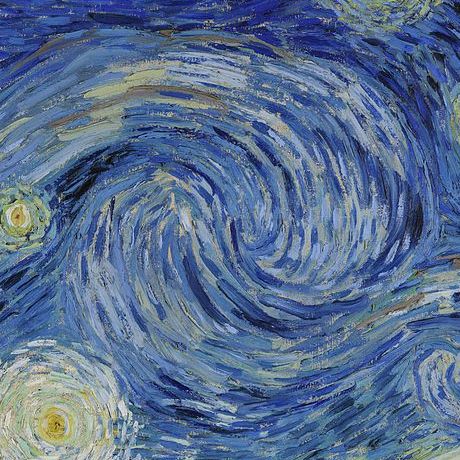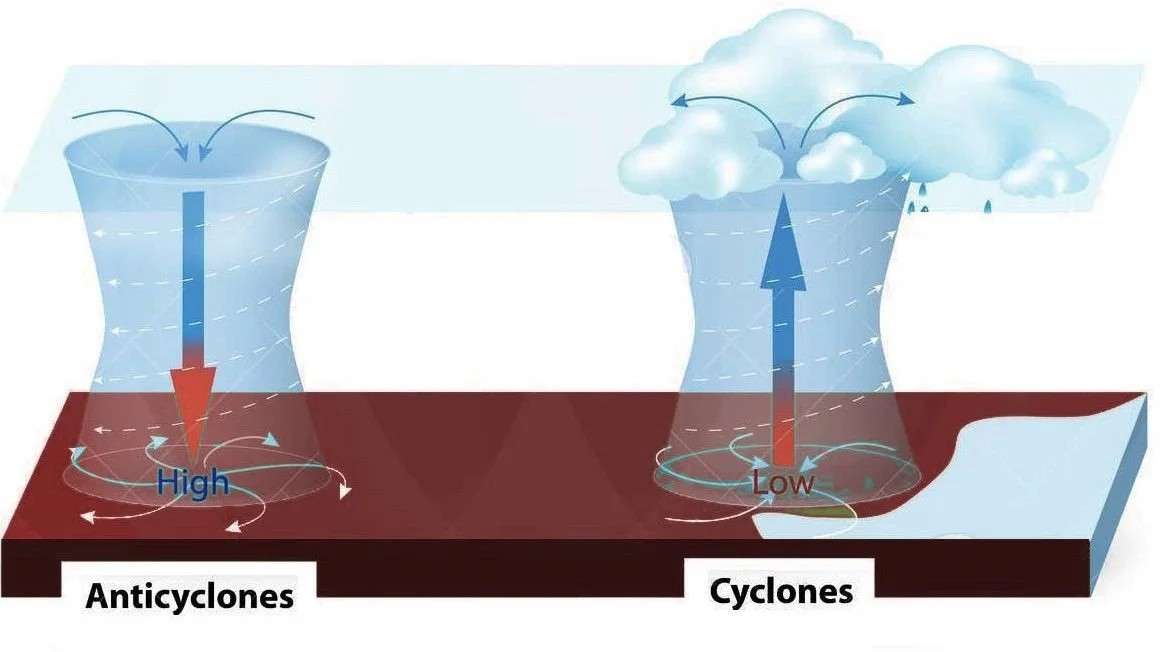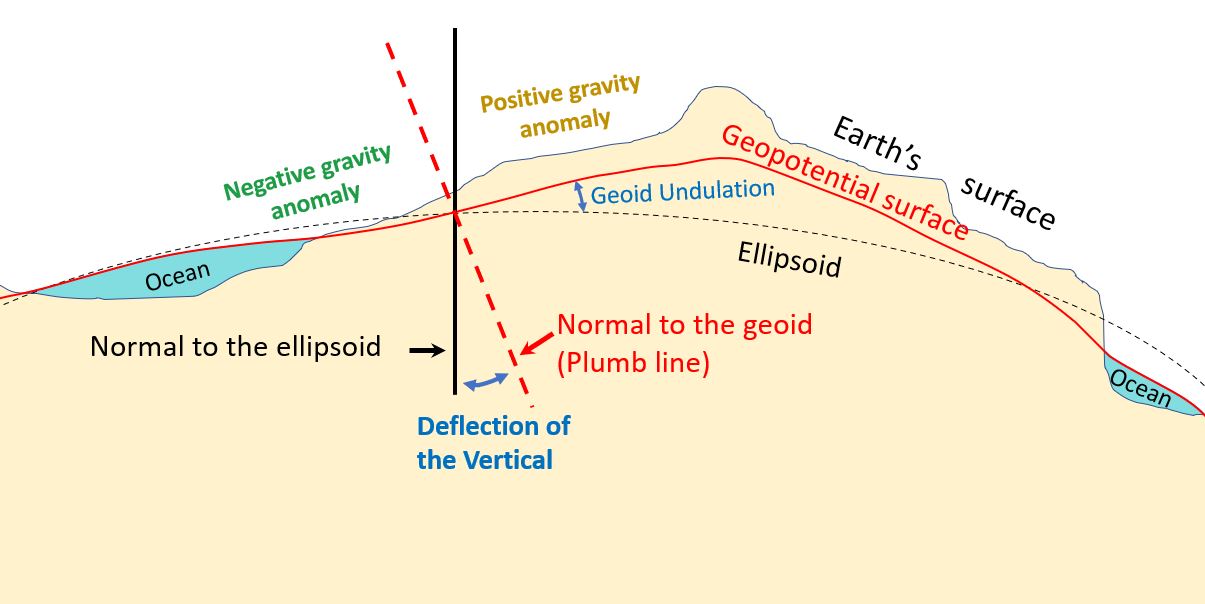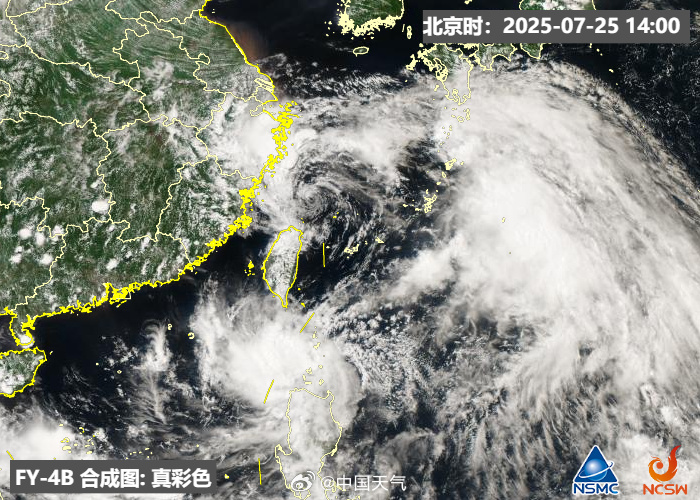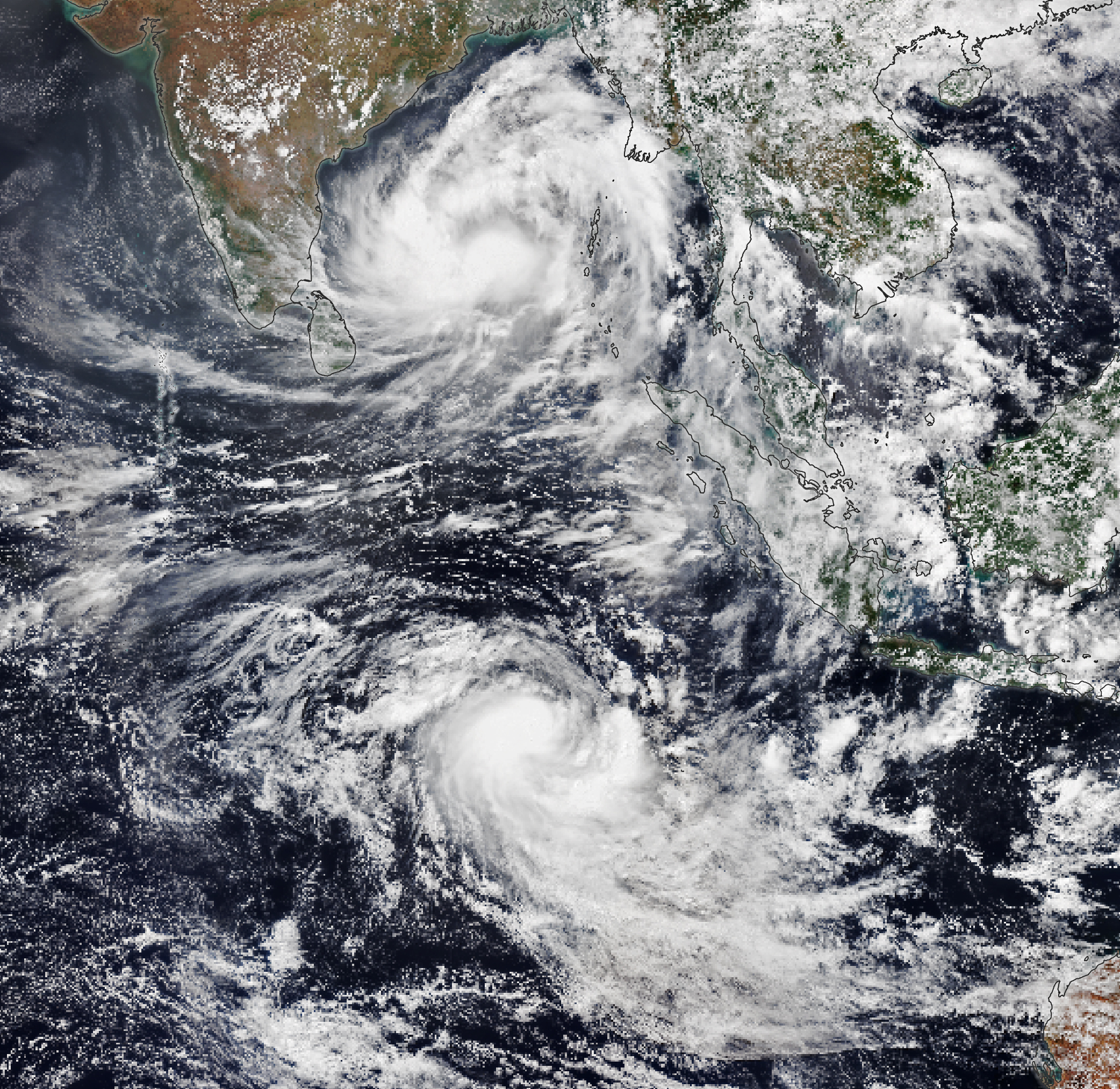Bad Coriolis
Do you remember what Coriolis force is? Can they actually explain what has happened in our daily life, such as the direction of a swil when we are flushing the toilet?
Podcast for this post: 【科学Podcast】北半球河流泥沙堆积在右岸?科里奥利力又小又大!#Science on Tap
Reference: https://personal.ems.psu.edu/~fraser/Bad/BadCoriolis.html
你还记得什么是科里奥利力吗?傅科摆,河岸冲刷,气旋与反气旋,冲马桶,发射炮弹. 冲马桶的时候方向是什么样的?是否由科里奥利力决定?是一个很诱人的解释方法,Faker by BBC TV special, from pole to pole. When cross the equator. 如何做出令人信服的虚假科普? 我们如何确认科里奥利力是主导的?一般来说较大的尺度,为什么?方便之下,计算Rossby数. 你还记得向心力吗?卫星发射. 为什么分析地球的时候我们很少提及向心力? 什么时候需要向心力?大地基准线.
- Fig 1: Cyclones (气旋) and Anticyclones (反气旋):
Some typical examples of cyclones are hurricane (northeastern Pacific or Atlantic,飓风), typhoon (northwestern Pacific,台风), tornado (龙卷风), polar low, etc. Some typical examples of anticyclones are subtropical high (亚热带高压,形成沙漠、欧洲热浪) as a part of Hadley cell (哈德里环流), and Siberian High (西伯利亚高压). The major reason behind the asymmetry between the cyclones and anticyclones is the existence of the nonlinear term. (Dynamically, the cyclone larger than the radius of deformation is unstable. How?) - Fig 2: Local vertical/pendulum direction, centrifugal force (向心力)
- Fig 3: Geoid (大地基准线)
- Fig 4: Coriolis force (科里奥利力)
- Fig 5: Cylcones in the East China Sea.
- Fig 6: Twin cyclones in the Indian Ocean (https://earthobservatory.nasa.gov/images/149812/twin-cyclones-in-the-indian-ocean?src=eoa-iotd)
What is Science on Tap?
An online symposium to share popular science with the broader range other than existing researchers. They were held weekly during 2021, and provided multiple topics from social science, biology, mechanical engineering, etc, mainly in Chinese. Xinyi serves as an active speaker, and she usually uses multiple sources to explain the topic. No recordings are available. These figures were used only for educational purposes.
